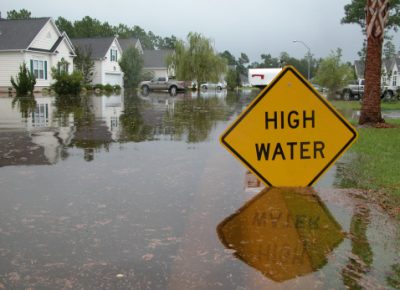8 Myths About Flood Insurance

In 2018 alone, the tri-state area experienced record rainfalls. As the weather patterns become more unpredictable in all regions of the country, any place can become an area prone to flooding. Purchasing flood insurance can provide protection and give you peace of mind. Even when you don’t live in a high-risk area, you could face damage to your property due to flooding.
If you are considering buying flood insurance, here are 8 common myths that you should know:
MYTH #1: Flood insurance is available through your homeowner’s insurance.
FACT: Normally, homeowners insurance do not cover flood damage. But, you can purchase Federal flood insurance through an insurance agent or company. It will cost on the average about $700 a year.
MYTH #2: If my property floods, it wouldn’t be by much.
FACT: Just five inches of water can cause at over $25,000 worth of damage.
MYTH #3: You can’t buy flood insurance if you are located in a high-flood-risk area, by the ocean, or a renter.
FACT: You can buy National Flood insurance as long as your community participates in the NFIP. It was created in 1968 to make federally backed flood insurance available to property owners, renters, and businesses in eligible communities.
MYTH #4: Flood insurance isn’t necessary because you can get disaster assistance from FEMA
FACT: When you have flood insurance, you can be ensured that the policy will protect you from flood events that aren’t necessarily big enough to be declared a presidential disaster. In less than 50 percent of flooding events, Federal disaster declarations are made. If one is made, federal disaster assistance typically is in the form of a low-interest disaster loan, which must be repaid. Any grants that may be provided are not enough to cover all losses.
MYTH #5: You can’t buy flood insurance immediately before or during a flood.
FACT: You can purchase National Flood Insurance at any time. Typically, there is a 30-day waiting period after you buy flood insurance before the policy is effective. The policy does not cover a loss in progress, which is defined as a loss occurring as of midnight on the first day your policy goes into effect.
Myth #6: The NFIP does not offer basement coverage.
FACT: Structural elements and essential equipment in a basement are covered, although basement improvements such as finished walls and floors, and personal belongings in a basement are not The following items are covered under building coverage, as long as they are connected to a power source, if required, and installed in their functioning location:
- Sump pumps
- Well water tanks and pumps, cisterns, and the water in them
- Oil tanks and the oil in them, natural gas tanks and the gas in them
- Pumps and/or tanks used in conjunction with solar energy
- Furnaces, water heaters, air conditioners with solar energy
- Furnaces, water heaters, air conditioners, and heat pumps
- Electrical junction and circuit breakers boxes and required utility connections
- Foundation elements
- Stairways, staircases, elevators and dumbwaiters
- Unpainted drywall walls and ceilings, including fiberglass insulation
- Cleanup
- Sump pumps
Myth #7: Flood insurance will blow my budget.
FACT: Not necessarily, as stated in Myth #1, the average cost is $700 a year, but if you live in a low-risk area, the premiums are lower. Some policies can start at $112 per year.
Low-risk flood plain areas have a lower chance of flooding and, therefore, require lower premiums.
MYTH #8: The NFIP does not cover flooding from hurricanes, the overflow of rivers or tidal waters.
FACT: The NFIP defines covered flooding as a general and temporary condition during which the surface of normally dry land is partially or completely inundated by water. There must be at least two properties in the area or two or more acres in the community must be affected. Flooding can be caused by:
- The overflow of inland or tidal waters.
- The unusual and rapid accumulation or runoff of surface waters from any source, such as heavy rainfall.
- Mudslides, i.e., mudflows that could be described as a river of liquid and flowing mud.
- The collapse or destabilization of land along the shore of a lake or other body of water, resulting from erosion or the effect of waves




